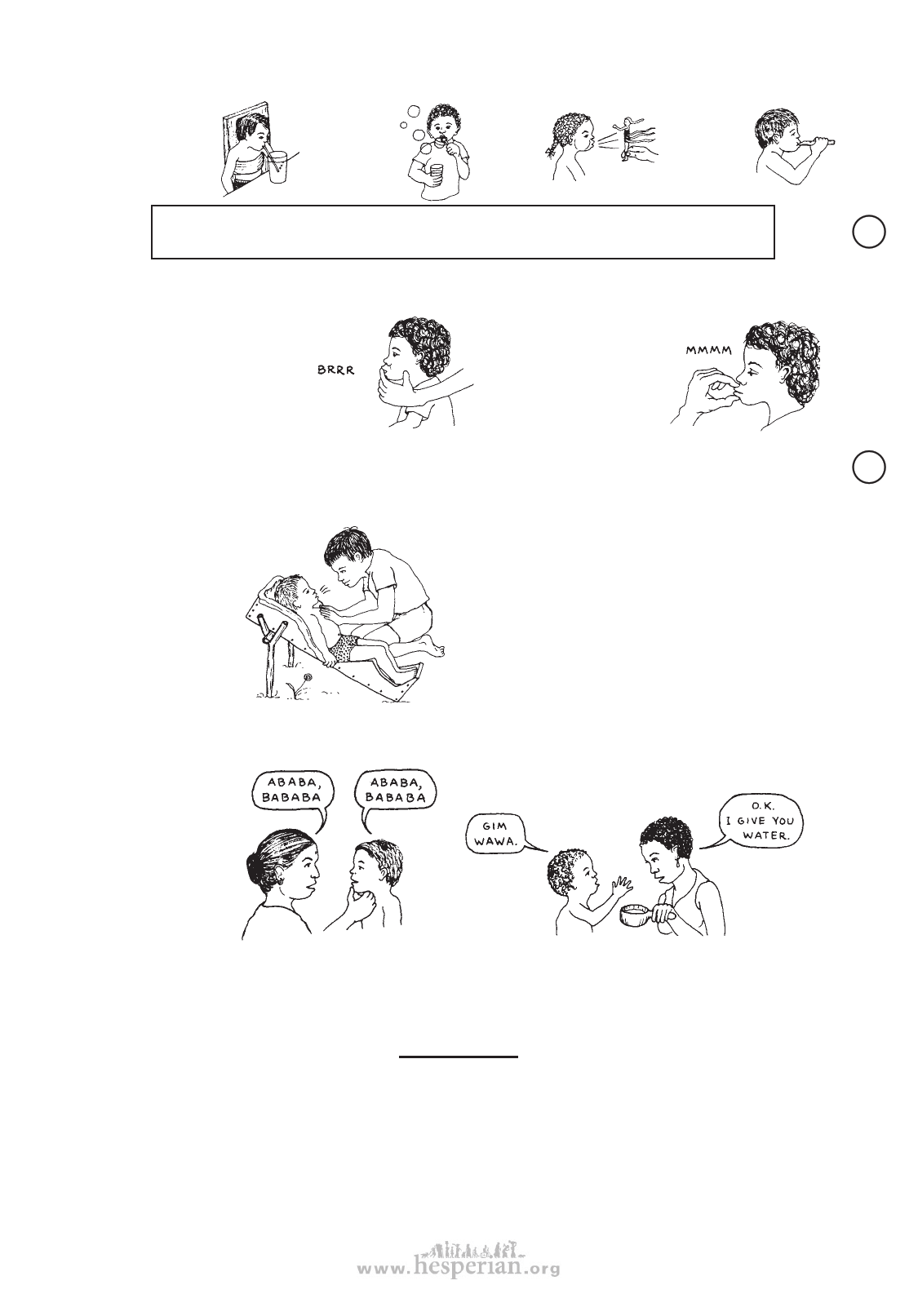
DEVELOPMENT ACTIVITIES
Play games in which you have the child:
suck and
blow bubbles
through a
straw
blow soap
bubbles
blow
air
blow
whistles
CAUTION: For children with cerebral palsy, these blowing exercises may increase the
uncontrolled tightening of muscles or twisting of the mouth. If so, DO NOT USE THEM.
315
cp
Encourage mouthing and chewing on clean toys (but not thumb sucking).
Help the child discover how
to make different sounds
by flapping her lips up and
down with your finger,
or by squeezing
them together as
she makes sounds.
For a child with cerebral palsy, you can help him control his mouth for eating or
speaking by stabilizing his body in a firm position. Choose the position in which he is
most relaxed (least spastic). This usually means bending the head, shoulders, and hips
forward. For this reason
it is sometimes said:
“WE CAN
CONTROL
THE LIPS
THROUGH
THE HIPS.”
You can help the child make different sounds
by pushing on and jiggling his chest.
Imitate the sounds he makes and encourage
him to make them by himself.
cp
If the child has trouble with controlling his
jaw when he tries to speak, try using ‘jaw
control’ with
your fingers,
like this.
(See p. 323.)
Have him
repeat sounds
that require jaw
movement.
When the child has difficulty pronouncing words,
do not correct her. Instead, repeat the words
correctly and clearly, showing that you understand.
REMEMBER—The child needs a lot of stimulation of all her senses to develop
language. Play with her, speak to her, and sing to her often. Ask her questions and
give her time to answer. Do not try to ‘make her learn’, but give her many learning
opportunities. Ask questions that need words for answers, not just ‘yes’ or ‘no’.
•
Is your child deaf? If your child is slow to speak, check his hearing (see p. 447). Even
if he hears some noises, he may not hear well enough to understand speech.
Also, some children who hear well may never be able to speak. For example, certain
children with cerebral palsy cannot control their mouth, tongue, or voice muscles.
For these children, as for young deaf children, we must look for other ways to
communicate. (See Chapter 31.)
disabled village children